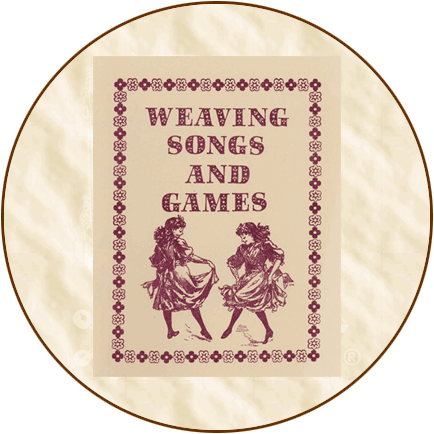.
Continued from product description
on Historical Books' Page Three...
Historical
Background: Weaving songs are considered "work songs"
(or "labor songs") that people would sing while working.
Spinning and weaving were often solitary and time-consuming work.
Children also worked at some of these chores and learned the
songs. Later, when the tasks of weaving and spinning were not
necessities, the songs still lingered on for the next generation
to sing for fun.
In Scotland, weaving and spinning were hard work, but there
was time for play and social gatherings such as "spinning
bees." During these gatherings, young girls would demonstrate
their skills along with songs and stories. One humorous verse
is "The Weaver o' the North."
There was a weaver o' the north
And oh but he was curel,
The very nicht that he got wed
He sat an' grat for gruel.
The text to another weaving song is:
If it wisna for the weavers, what would we do?
We wadna hae claith made o' oor woo',
We wadna hae a coat, neither black nor blue
Gin it wisny for the wark o' the weavers.
There were also many Irish weaving and spinning songs that
were developed. One of the main characteristics of these artistic
folk songs is their simplicity. They were easily sung or played
on a fiddle. There are songs about flax, spinning, the spinner,
the spinning wheel, shearing the sheep, weaving, the weaver,
loom, and shuttle. Much of this music falls into the category
of Irish jigs and reels. Some of the earliest Irish music was
notated in 1792. Another collection of Irish music was published
between 1902 and 1905.
Games and songs associated with weaving are easy enough for
kindergarten children to play and sing. While the games are being
played, a song with a familiar or simple tune can be sung. The
kinds of games associated with weaving include relay games, hunting
games (like "I spy"), guessing games, and counting
games. The lyrics of these songs may have repetitious phrases,
show the importance of weaving, or just be fun to sing.













